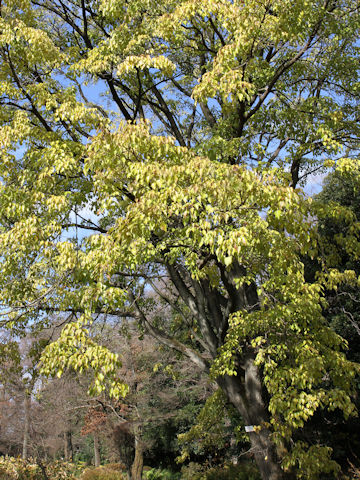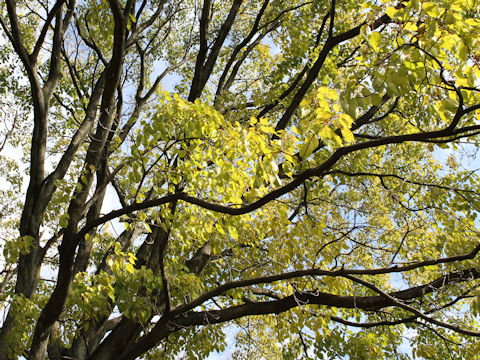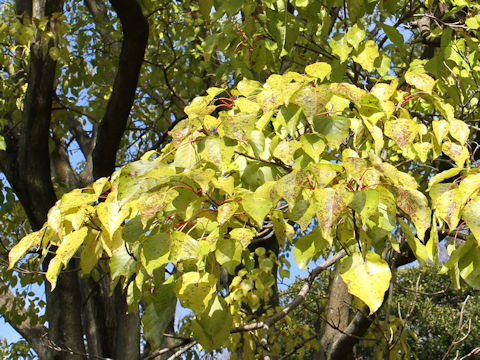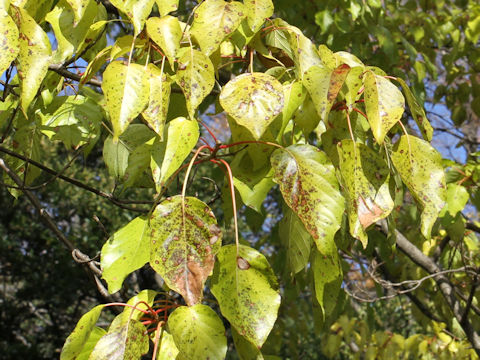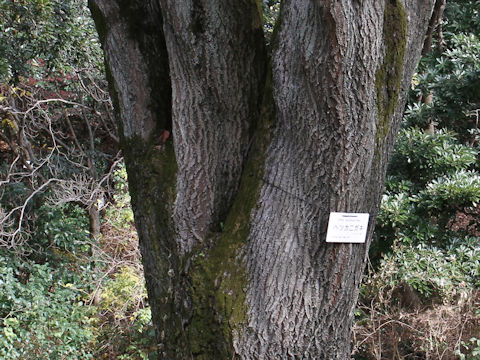
|
The "Hetsuka-nigaki" (Sinoadina racemosa) belongs to Rubiaceae (the Madder family). It is a tall decidous tree that is native to southern Shikoku, sothern Kyushu of Japan, and Taiwan. This tree grows in coastal forests and can reach 10-15 m in height. The bark is dark gray-white and furrowed fine longitudially when aging. The leaves are leathery, glossy, ovate-round and alternate with long petioles. The many, white-yellow tubular flowers bloom in the spherical capitulum from June to July. The corolla is quintuple-lobate shallowly at the tips and protrudes stamens. Its Japanese name comes from the bitter taste of its stem and leaves, which were found in Hetsuka on the Okuma Peninsula of Kyushu. In Taiwanese Chinese, it is called "水冬瓜".
|
